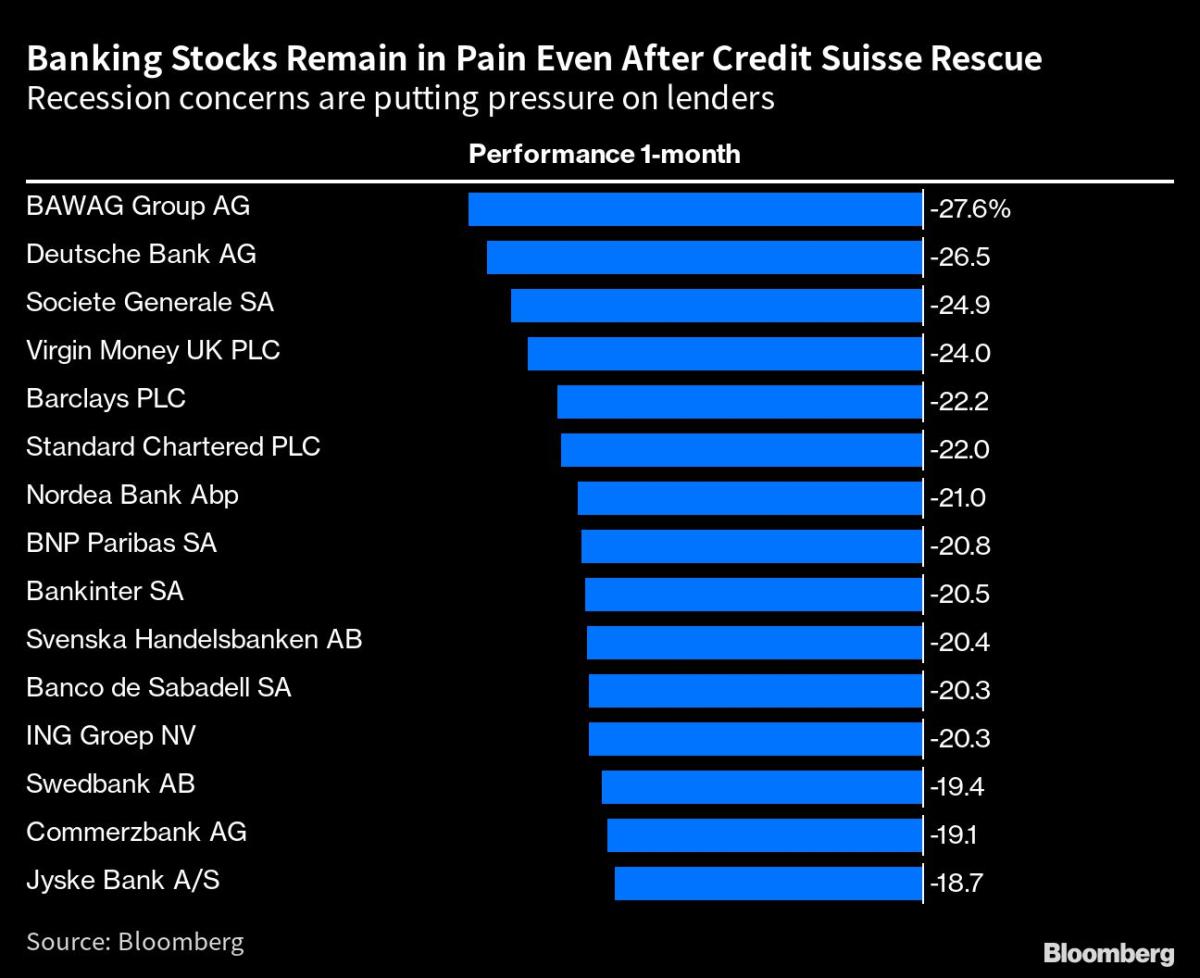
(Bloomberg) -- Fears of tightening financial conditions leading to a recession are driving traders to rethink their risk exposure and seek out safety in the stock market.
Most Read from Bloomberg
“It ain’t pretty out there,” said Charlie McElligot, cross-asset strategist at Nomura Securities International. “The bank ‘profitability crisis’ has become a ‘solvency crisis,’ and will act as a catalyst for a substantial tightening impulse in financial conditions.”
The repositioning started about two weeks ago when the problems in the US banking system became clear with the collapse of Silicon Valley Bank. The shift might look and feel extra violent at times, not just because the financial sector is at the center of it all, but also because the stock market had rallied to start the year. That’s now being quickly unwound.
However, the risks have been there for a while and go beyond the problems in the financial system. Double-digit declines in the likes of Deutsche Bank AG or France’s Societe Generale SA over the past month mostly reflect the impact on bank’s earnings if lending activity shrinks and the firms might have to ramp up their loan loss provisions.
Alongside banks, other growth-sensitive sectors tumbled on Friday with energy stocks falling as West Texas Intermediate crude dipped below $70 per barrel gain. Autos and miners were among the worst performers, and commercial real estate shares slumped. Investors instead dashed for industries perceived as more resilient to economic downturns, including food, pharma and telecoms.
This kind of positioning is among the reasons stock markets will test new lows in the next thee to six months, Bank of America analysts led by Michael Hartnett wrote in a note Friday.
More evidence is found in factor models, where money managers are avoiding companies with high levels of leverage and equity volatility. They also are ditching shares that screen highly for dividends and buybacks, a clear sign investors expect companies to preserve cash going forward rather then blasting it out to shareholders.
Meanwhile, gold briefly traded above $2,000 as investors seek out safe harbors to weather any oncoming storm. Money market funds also attracted their largest inflows since March 2020 in the week through March 22, with more than $300 billion moving into cash over the course of the past month, according to a Bank of America note that cites EPFR Global data.
Equity market volatility is not yet near the levels seen last week, with the Cboe VIX Index trading at 23. However implied volatility for US equity indexes and ETFs remains “pretty tense,” according to McElligot, while the so-called VVIX Index, which measures volatility of volatility, showed demand for tail risk hedging.
“For the lack of better words, our outlook is negative,” said Marko Kolanovic, the chief global markets strategist at JPMorgan Chase & Co. at a conference in Frankfurt, Germany, on Wednesday. As for positioning, Kolanovic advises investors to go more toward cash and short-term bonds where you get “paid to wait for the situation to clear up.”
--With assistance from Michael Msika.
Most Read from Bloomberg Businessweek
©2023 Bloomberg L.P.
Article From & Read More ( The Flight to Safety Is About the Next Recession, Not Banks - Yahoo Finance )https://ift.tt/TS6bMc4
Business
Bagikan Berita Ini















0 Response to "The Flight to Safety Is About the Next Recession, Not Banks - Yahoo Finance"
Post a Comment